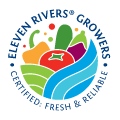Collaboration between FDA and Mexico in order to improve food safety

The FDA’s special report in 2011, “Road to global product safety and quality” (Road to safety and quality of global products), indicates that the agency partners with nations around the world to improve safety and quality of the products. In addition, the FDA recently issued its international plan to strengthen the capacity of food safety, which deals with the acceptance of laboratory methods throughout the international community, in addition to talking about the exchange of information on the methods of current and new laboratories. .
In January 2012, the FDA products met with the services of the National Health Service, Food Safety and Agri-Food Quality (SENASICA) to better understand the operations, practices, methods and quality control of the laboratories. To achieve common goals, the FDA / SENASICA Laboratory Capability Collaboration Program (LCCP) has been established to improve the collective potential to strengthen the operative capacities of the laboratories in an effective and substantial manner.
Participation in the LCCP program includes experts from the FDA Office of International Programs in Mexico City, as well as the Office of Regulatory Affairs (ORA) and the Center for Food Safety and Applied Nutrition (CFSAN) in English). Working with representatives of the National Laboratories of SENASICA, a comprehensive unit was formed and established for opportunities that can be improved to improve public health through the LCCP program. Some important details of the work of the program include:
In March 2012, the Northeast Regional Laboratory of the FDA (NRL) invited a Mexican delegation of laboratory experts who represented the three most important laboratories of SENASICA. The NRL provided general information on FDA food laboratory tests with emphasis on the disciplines of microbiology and chemistry (of food and medicine). The NRL scientists shared the methods currently used by the FDA to analyze microbiological and chemical contaminants in food under the jurisdiction of the FDA. Communication channels were created to improve collaboration.
The information shared by FDA scientists had a direct effect on SENASICA’s previous thinking and understanding at the beginning of this process, which resulted in the creation of an ultramodern microbiological testing laboratory. This laboratory will supervise the conditions of food safety during production, processing and packaging, through the microbiological analysis of fresh water, fruits and vegetables, as well as environmental samples from the risk areas.
The Mexican state laboratory in Sinaloa and the FDA offered a training course for SENASICA microbiologists in December 2012 on pulsed-field gel electrophoresis (PFGE) and serological techniques. Both techniques are established methods used for the identification and tracing of bacterial strains, which is critical information that frequently increases the investigations of epidemics caused by food.
Carl Sciacchitano, Senior Advisor for International Scientific Affairs in the Office of International Programs of the FDA.
Source: www.globalstd.com


